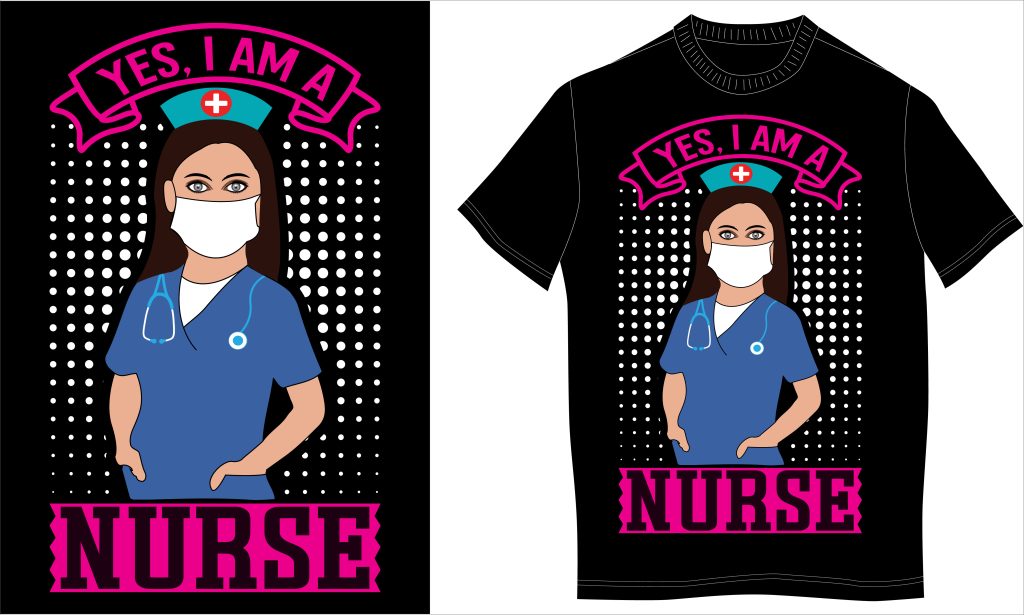In the ever-evolving field of textile printing, DTF supplies are the backbone of transforming creative visions into tangible reality. With the rise of Direct-to-Film (DTF) technology, enthusiasts and entrepreneurs alike are embracing this innovative method to produce custom apparel. This guide will unravel the essential tools and knowledge needed, including DTF transfer film, specialized DTF printers, and vibrant DTF inks, ensuring beginners have all the resources to excel. Moreover, understanding the importance of a reliable heat press machine will empower users to achieve professional-grade results right from their workshops. Join us as we explore the exciting world of DTF printing and the critical supplies that make it possible.
Direct-to-Film supplies are pivotal in the modern fabric customization landscape, enabling both hobbyists and businesses to create bespoke designs with ease. This technique, often referred to as DTF printing, allows for high-quality images to be printed on specialized films that can be easily transferred to various textiles. With tailored tools such as unique transfer films and specialized inks, beginners can dive straight into the creative process. Moreover, understanding the role of heat transfer equipment will ensure that designs adhere perfectly to the fabric, enhancing the durability and appeal of finished products. Explore this fascinating realm where technology meets creativity, and elevate your printing endeavors with the right supplies.
The Essentials of DTF Supplies
When venturing into DTF printing, having the right supplies is paramount. Chief among these are specialized items such as the DTF printer and DTF transfer film. The DTF printer is designed specifically to handle the unique inks used in the DTF printing process, ensuring that prints come out vibrant and durable. Additionally, the DTF transfer film is coated with a special material that promotes effective ink adhesion, making it an essential tool for anyone serious about DTF printing.
Next on the list of critical supplies is high-quality DTF ink, which plays a vital role in the printing process. This ink must be specifically formulated for DTF applications as it ensures rich colors and longevity. Furthermore, incorporating hot melt powder into your printing process is necessary for optimal results, as it aids in the transfer of ink from the film to your chosen fabric. Ultimately, assembling these DTF supplies creates a solid foundation for successful and creative textile projects.
Understanding DTF Printing Processes
The DTF printing process may seem daunting at first, but it’s relatively straightforward once you understand the workflow. It begins with design creation, where users can unleash their creativity to produce a digital design that will be printed. Employing a compatible DTF printer, the design is then printed onto the DTF transfer film, requiring careful adjustment of printer settings to ensure high-quality prints. This process is a crucial step, as it lays the groundwork for a successful transfer.
After printing, the hot melt powder is applied over the design to enhance adhesion once heated. This step is essential, and failing to do it correctly can lead to poor results. Once the powder has been applied, it must be cured using a heat source, solidifying the bond between the powder and ink. Finally, using a heat press machine, the film is secured to the fabric, sealing the design onto the material. This systematic approach underscores the importance of each component in achieving professional-level prints.
The Role of Heat Press Machines in DTF
Heat press machines play a critical role in the DTF printing process. These machines ensure that the right amount of heat and pressure is applied to the design during the transfer from the DTF transfer film to the fabric. The correct settings will impact the quality and durability of the finished product, making it essential for DTF printers to invest in a reliable heat press machine. Various models are available; selecting one that meets the specific needs of your workspace can significantly influence your printing outcomes.
When using a heat press for DTF printing, it’s important to monitor both the temperature and duration meticulously. Typically, a temperature range between 350°F to 400°F is utilized, but this varies depending on the fabric and film type. Proper execution of this step results in a vibrant, enduring print that withstands multiple washes without fading. Therefore, the heat press machine is not just a tool but a vital piece of equipment that contributes significantly to the overall success of DTF printing.
Advantages of DTF Printing Technology
The benefits of DTF printing technology are numerous, making it an ideal choice for both novices and advanced users alike. First and foremost, the print quality achieved through DTF is exceptional; designs come out vivid and sharp, elevating the final product’s appeal. Moreover, DTF printing’s versatility allows it to be used on various substrates, including cotton, polyester, and blends, which broadens the scope for customization in different markets and projects.
Additionally, setting up a DTF printing operation is relatively straightforward compared to traditional screen printing methods. This simplicity allows individuals and small businesses to create custom textiles efficiently without needing extensive technical knowledge about printing. Altogether, these advantages position DTF printing as a lucrative option for entrepreneurs looking to tap into the custom apparel market.
Market Trends and Future of DTF Printing
As the popularity of DTF printing continues to surge, market trends indicate a growing demand for high-quality, customizable fabric solutions. Many entrepreneurs report successful ventures due to the cost-effectiveness of DTF technology, particularly in producing small batches of unique designs. The ongoing expansion of online tutorials and community support further fortifies this trend, drawing in hobbyists and professionals eager to explore the creative possibilities.
Moreover, the landscape of DTF printing appears poised for further advancements, with innovations in ink formulation, transfer films, and equipment on the horizon. This evolution will both enhance print quality and increase the ease of operation, making DTF supplies more accessible than ever. As businesses and individuals seek to differentiate their products in an increasingly competitive market, DTF printing will likely play a vital role in the fabric customization sector.
Getting Started with DTF Supplies
Beginning your DTF printing journey requires gathering the appropriate supplies and knowledge of the process. Start by investing in a quality DTF printer that is compatible with the inks designed specifically for this technology, as this piece of equipment is the heart of the operation. Additionally, ensure you have a reliable source for DTF transfer film and hot melt powder to support your projects.
As you embark on using these DTF supplies, utilizing online resources and joining community forums can be incredibly beneficial for troubleshooting and tips. Engaging with others who share a passion for DTF printing can foster inspiration and provide valuable insights into perfecting your art. By establishing a solid foundation of equipment and community support, you’ll be well-equipped to unleash your creativity in the world of DTF.
Frequently Asked Questions
What are the essential DTF supplies needed for Direct-to-Film printing?
To begin DTF printing, you will need several essential supplies including a DTF printer, special DTF ink, DTF transfer film, hot melt powder, and a heat press machine. Each of these components plays a crucial role in ensuring high-quality results in your fabric printing process.
How does a DTF printer differ from a standard printer?
A DTF printer is specifically designed to work with DTF inks and films, allowing for vibrant color reproduction and efficient transfer to fabrics. Unlike standard printers, DTF printers may require modifications for optimal compatibility with DTF supplies, ensuring the proper application of inks and films.
What is DTF transfer film and why is it important?
DTF transfer film is a crucial supply in the DTF printing process. This special film has a coating that allows DTF ink to bond effectively during printing. Choosing the right DTF transfer film is vital for achieving crisp and durable images on fabric.
What type of DTF ink should I use for best results?
For optimal results in DTF printing, you should use high-quality DTF ink formulated specifically for this process. These inks provide vibrant colors, excellent adhesion, and increased durability, ensuring that your designs last through repeated washes.
How does a heat press machine contribute to the DTF printing process?
The heat press machine is essential in the DTF printing process as it applies the necessary heat and pressure to transfer the design from the DTF transfer film onto the fabric. This step is critical for bonding the ink and ensuring that the print is durable and long-lasting.
Can I use DTF printing on various fabric types?
Yes, DTF printing is highly versatile and can be used on a wide range of fabric types, including cotton, polyester, and blends. This adaptability makes DTF supplies a popular choice for customizing various textile projects.
| Key Supplies for DTF Printing | Description | Importance | |
|---|---|---|---|
| DTF Printer | Essential for printing designs onto transfer film. | Compatibility with DTF inks and films is crucial. | |
| Special DTF Ink | High-quality ink designed for DTF applications. | Ensures durability and vibrancy of prints. | |
| DTF Transfer Film | Film with a special coating for ink adhesion. | Key for achieving high-quality transfer results. | |
| Hot Melt Powder | Powder that helps stick the ink to the fabric. | Essential for bonding during the transfer process. | |
| Heat Press Machine | Used to transfer designs from film to fabric. | Crucial for applying heat and pressure. | |
Summary
DTF supplies are becoming increasingly essential for anyone interested in fabric printing and customization. With the right tools, like a specialized DTF printer and high-quality inks, you can achieve vibrant designs that adhere well to various fabric types. The step-by-step process, from printing on transfer film to using a heat press, allows for creativity and quality in textile projects. As the demand for DTF supplies grows, embracing this technology opens up numerous opportunities for businesses and DIY enthusiasts alike.



